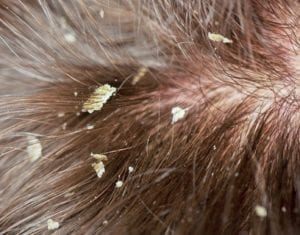Seborrhoeic Dermatitis
Seborrhoeic Dermatitis (SD) – If you are looking for advice or treatment for an itchy dry scalp please contact the advice line. You can speak with a trichologist who will advise you. You can also arrange a consultation. SD is a common skin condition that can be very difficult to live with. The itching can make you feel very uncomfortable. The flaky skin very embarrassing. We can Help control or remove this condition.
BOOK A CONSULTATION
0207 404 0072 (free advice line)

Some symptoms may show similarities to certain systemic diseases including: Leukemia, Carcinoma (oesophagus or stomach), Malnutrition, Lupus Erythematosus, Tuberculosis, Hepatic and Pulmonary disease.
Treatment
Primarily a diagnosis is paramount because once this is established treatment can be applied. We have a simple but unique method of treating such a condition and even after your first treatment you will fee much better. Our treatment involves slowing down the cell activity. This is done by firstly removing the crusted skin revealing the affected legions therefore once free of dry skin we can then get to work on slowing down the cell proliferation. Light therapy may well be used at this stage.
Please be mindful that removing the crusting is a specialist role. If you do not prepare the skin properly, there is every chance that you will make the condition worse because it is very easy to damage the skin using this method.
Other conditions may show similarities to Seborrhoeic Dermatitis including : Psoriasis Capitis, Neurodermatitis, Streptococcal Infection, Ringworm (Tinea Capitis, Favus), Impetigo, Ichthyosis, Seborrhoeic Dermatitis (of Scalp)
The following list describes the types of Pityriasis. They affect a variety of locations on the body. Each condition has a link to another page which offers further information. This is not to assist self diagnosis. I would suggest if you are suffering from any symptoms as described then professional help should be gained.
Pityriasis Circinata (Rotunda)
Versicolor
Pityriasis Lichenoides
Alba
Rubra Pilaris
Thanks for reading this page. If you have any specific questions relating to this or any other hair loss condition please feel free to contact the free advice line. You can speak with a Trichologist in person. Regulated by the Trichological Society TTS
